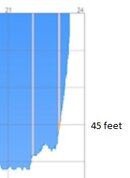Gotta check that dive computer, gauge whatever you have all the time imho. This is what I learned.
I know better to check air more freq but got caught up in everything. Check on your life support gadgets!
Thanks all!


I know better to check air more freq but got caught up in everything. Check on your life support gadgets!
Thanks all!






